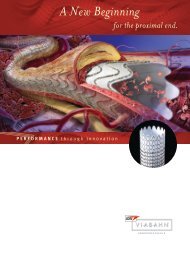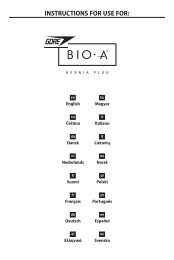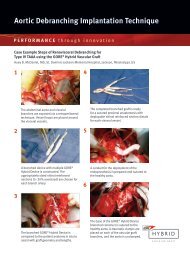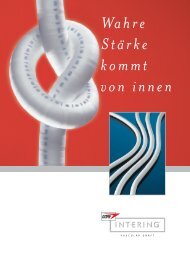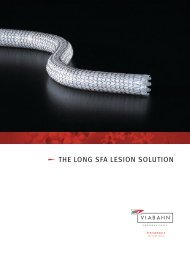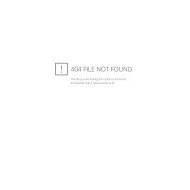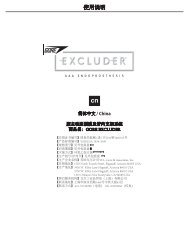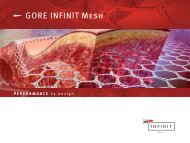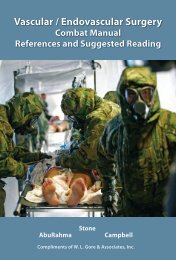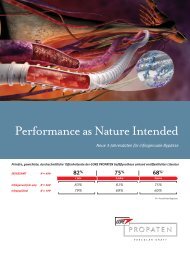You also want an ePaper? Increase the reach of your titles
YUMPU automatically turns print PDFs into web optimized ePapers that Google loves.
Closing RemarksIn ThisISSUE• CASE STUDYAdvantages of the GORE ® HELEX ®Septal Occluder for Closureof Atrial Septal Defect with aDeficient Retroaortic Rim• FEATURED TOPIC<strong>Gore</strong> IntroducesFlame-Retardant Technology• IN THE NEWS<strong>Gore</strong> Participates in FDACirculatory System DevicesAdvisory Panel Meeting• UPCOMING EVENTS– Atrial Septal Defect ClosureCourse with an Animal LabPERFORMANCE by designC A S E S T U D YAdvantages of the GORE ® HELEX ® SeptalOccluder for Closure of Atrial Septal Defectwith a Deficient Retroaortic RimBarry A. Love, MD, Matthew Bock, MD and Shubhika Srivastava, MDDivision of Pediatric CardiologyMount Sinai <strong>Medical</strong> Center, New York, USAAn 11-year old boy presented to our laboratory for closure of an atrial septaldefect after a transthoracic echocardiogram showed an ostium secundum atrialseptal defect with evidence of right ventricular volume overload. Hemodynamicsrevealed a Qp / Qs of 1.5:1 and normal pulmonary artery pressure. Intraproceduraltransesophageal echocardiography (TEE) was performed to determine the size ofthe defect and the dimensions of the tissue rims. The defect measured 13 x 14 mmby TEE with a deficient retroaortic rim at the level of the tricuspid valve (Figure 1).Balloon-sizing of the defect was performed using the “stop-flow” technique andContinued on inside cover...goremedical.com/HELEXSummer 2012 • Issue XIX
Advantages of the GORE ® HELEX ® Septal Occluder for Closureof Atrial Septal Defect with a Deficient Retroaortic Rim...Case Study continued from page 1a diameter of 14 mm was measured byfluoroscopy and TEE.Initially, a 14 mm AMPLATZER ® SeptalOccluder (ASO) was chosen and deployedacross the defect. Careful inspection byTEE showed the device to be distortingthe aortic root (Figure 2).At this point, the AMPLATZER ® SeptalOccluder was recaptured prior to releaseand a 30 mm GORE ® HELEX ® SeptalOccluder was chosen. The GORE ® HELEX ®Septal Occluder was then deployedacross the defect. The more compliantGORE ® HELEX ® Septal Occluder was ableto straddle the aorta without distortion(Figure 3). There was no residual shunt bycolor Doppler. The lock loop was deployedwith a firm tug on the Mandrel and thedevice oriented in its final position. Theability to completely evaluate the finalposition of the device without tensionfrom the delivery system, but with asecure way of retrieving the device ifnecessary (using the retrieval cord) gavethe operators added security in thispotentially difficult device deployment.Complete evaluation of the device showedit to straddle the aorta without distortion.The device was opposed flush with theremainder of the septum (Figure 4).The patient was admitted to the Pediatricward for monitoring overnight and atransthoracic echocardiogram wasperformed the following day showinggood device position and no residualshunt. The patient was discharged homeon ASA 81 mg daily for 6 months. Followupechocardiogram at 6 months showsthe device to be in good position with noresidual shunt, no interference with othercardiac structures and no impingement onthe aorta.DiscussionOne of the most important challengesin transcatheter closure of atrial septaldefects is assessing which defects arepossible to close percutaneously despitea paucity of tissue rim. An inadequaterim may not allow for proper deviceanchoring leading to device malpositionand residual shunt, or device embolizationnecessitating retrieval and alternateclosure strategy (usually surgery). Themost common site of deficient rim isthe retroaortic area (also called theanterior-superior rim) which may bedeficient in up to 45% of patientswith ASD. 1Less-compliant devices such as theAMPLATZER ® Septal Occluder have alsobeen implicated in erosion of the aortaand deficient rim (usually the retroaortic)has been implicated in most of theseevents. The event rate of erosion for theAMPLATZER ® Septal Occluder has beenreported to be on the order of 0.11%(~1 / 1000) 2 . Although a relatively lowrisk, device erosion may be fatal. Pressureon the aorta sufficient to distort theanatomy, in our opinion, may appear tobe a risk for eventual device erosion.With increased awareness of the riskof erosion with the AMPLATZER ® SeptalOccluder, we have taken great care inour intraprocedural echocardiographicevaluation of atrial septal defect closuredevices. It has been our observation thatFigure 1. Short axis view of the atrial septum at thelevel of the tricuspid valve showing a 13 mm ASD.Note the absence of retroaortic tissue rim.Figure 2. 14 mm AMPLATZER ® Septal Occluder inposition across ASD. Note how both the right andleft atrial disks impinge on the aorta leading toconcave deformities (arrows).
F E A T U R E D T O P I C<strong>Gore</strong> Introduces Flame-Retardant TechnologyTo achieve protection against suddenexposure to heat and flames, manygarments must sacrifice weatherprotection and comfort. But garmentsmade with a first-of-a-kind laminate from<strong>Gore</strong> are able to deliver all ofthese capabilities.GORE ® PYRAD Fabric Technologyallows manufacturers to integrateflame-retardant performance withtraditional synthetic outerwear fabricswithout sacrificing their benefits. Thisgives members of the military and variousother professions — such as the oil, gasand utilities industries — an alternative totraditional flame-resistant fabrics, whichare often heavy and can become saturatedin the rain and other wet-weatherconditions.“In creating this technology, the goal wasvery ambitious—to develop a laminate fora GORE-TEX ® weatherproof garment that’scomfortable, lightweight and still providesas much protection as possible againstthe sudden risk of exposure to heat andflame,” says Technically Oriented Fabrics(TOF) communications associate MichaelHaag. “It quickly became clear that theseseemingly contradictory requirementscould not be met using normal flameresistant/ fabrics, because they do nothave the ideal attributes for weatherprotection.”The solution: GORE ® PYRAD FabricTechnology — a unique laminate enablingtechnology that prevents flames frompenetrating a garment, even if thegarment is made of flammable textileslike nylon or polyester. This technologyfalls within TOF’s “Heat & Flame” productclass and can be combined with ePTFElaminates, which provide durableweather protection.Product specialist Jim Findlay notes thatthe combination of weather and flameprotection should ultimately help endusersmaximize their abilities. “In a safetyenvironment, the more you’re able tofocus on your activity without discomfortor detraction from heavy, wet garments,the better you’re able to perform,”he says.STOPPING FLAMES IN THEIR TRACKSGarments currently engineered with thenew laminate meet five internationallyacceptedsafety standards for heat andflame-resistant clothing.The laminate is not intended for use instructural fire-fighting applications, but isfor protection against sudden exposure toflames, such as those encountered in flashfires and explosions. The first commercialapplications include US military outerwearand European workwear for the oil and gasindustries.Business leader Gerry Mulligan explainsthat when flames come into contactwith the laminate, a carbonization, or“charring,” process occurs, resultingin the formation of an insulating layerthat extinguishes the flames “almostinstantaneously.”R&D associate Ketan Panse, continues,“After the flame extinguishes, you canclearly see the protective properties ofthe technology. There are no holes in thefabric, and the seams remain intact.”EXPANDING PRODUCT LEADERSHIPIn addition to its flame-retardantproperties, the laminate features<strong>Gore</strong>’s antistatic technology in certainapplications, in order to reduce the risk ofcombustion due to electrical sparks fromstatic discharge. “With the incorporation
I N T H E N E W S<strong>Gore</strong> Participates in FDA Circulatory SystemDevices Advisory Panel MeetingFocus on Safety and Effectiveness of GORE ® HELEX ® Septal Occluder for Closure of Atrial Septal Defect (ASD)W. L. <strong>Gore</strong> & Associates announced on June 7, 2012 participation details for the May 24th FDA Circulatory SystemDevices Advisory Panel Meeting, where worldwide data was reviewed for the GORE ® HELEX ® Septal Occluder, indicatedfor closure of Atrial Septal Defects (ASD). The FDA convened the meeting to discuss current knowledge about the safetyand effectiveness of devices approved for transcatheter ASD closure. Satisfied with meeting outcomes, <strong>Gore</strong> valued theopportunity to participate and have the FDA and Advisory Panel review more than a decade of clinical experience withthe GORE ® HELEX ® Device.Approved by the FDA in August 2006, the GORE ® HELEX ® Septal Occluder was one of two devices discussed.The Advisory Panel did not recommend additional data analysis or new studies for the GORE ® HELEX ® Device.The Panel was satisfied that <strong>Gore</strong>’s five year Post-Approval Study, slated for completion in 2014, will provideuseful information to physicians and patients. The Panel did make a number of recommendations for more robustpatient communications regarding the risks / benefits of transcatheter ASD closure. To view the FDA’s presentationsand official meeting summary visit: Meeting Materials*.John Rhodes, MD, Chief of The Congenital Heart Center, Duke University <strong>Medical</strong> Center presented a detailed analysisof the clinical performance in the application of ASD closure using the <strong>Gore</strong> device. This review spanned the experiencefrom the initial clinical studies; initiated in Spring 2000, to the device’s post-approval experience through December31, 2011. The presentation concluded that the GORE ® HELEX ® Septal Occluder is an effective treatment option forpatients with ASDs less than 18 mm in diameter and is associated with a low risk of adverse events.“I am confident in recommending closure with the GORE ® HELEX ® Septal Occluder to my patients because of itssolid record of performance earned over a decade of clinical use, and my confidence in its long term safety profile,”said Dr. Rhodes.Howard Rosenfeld, MD, Chief of the Division of Pediatric Cardiology at Children’s Hospital and Research CenterOakland, served as the chair of <strong>Gore</strong>’s Data Safety Monitoring Board (DSMB) through the Feasibility, Pivotal andContinued Access Studies of the GORE ® HELEX ® Septal Occluder. Speaking during the public forum section of thePanel’s deliberations, Dr. Rosenfeld stated, “Throughout my DSMB involvement the <strong>Gore</strong> team has beenaggressive in evaluating adverse events and testing theories regarding possible device or procedural flaws.”“The GORE ® HELEX ® Septal Occluder has an excellent safety profile for its indicated use, the closure of ASDs.In a thorough review of data, from more than a decade of implants worldwide, <strong>Gore</strong> has not received any reports ofheart wall erosion or late emergent surgical intervention,” said Stuart Broyles, PhD, Associate with the <strong>Gore</strong> <strong>Medical</strong>Division Stroke Business. “We are reviewing feedback from the Circulatory System Devices Panel and will continueto work with the FDA to ensure patient safety. We intend to complete our five-year post-approval study, as thedata generated from this study will provide pertinent information for the FDA, physicians and patients. We remaincommitted to maintaining this level of excellence and commend the FDA for convening this timely discussion.”* http://www.fda.gov/AdvisoryCommittees/CommitteesMeetingMaterials/<strong>Medical</strong>Devices/<strong>Medical</strong>DevicesAdvisoryCommittee/CirculatorySystemDevicesPanel/ucm300073.htm
U P C O M I N G E V E N T SPlease Join Us…Atrial Septal Defect Closure Course with an Animal LabAugust 16–17Detroit, Michigan<strong>Gore</strong>’s commitment to excellence continues with the GORE MEDICAL MASTERY SERIES.The Atrial Septal Defect Closure courses provide Interventional Cardiologists with theopportunity to develop their knowledge of implant techniques. Contact your local <strong>Gore</strong>Sales Associate for further information regarding these various course opportunities.If you have a topic that you would like us to consider in a future issue of Closing Remarks,please contact your local <strong>Gore</strong> Sales Associate or e-mail ClosingRemarks@wlgore.comW. L. <strong>Gore</strong> & Associates, Inc.Flagstaff, AZ 86004+65.67332882 (Asia Pacific) 800.437.8181 (United States)00800.6334.4673 (Europe) 928.779.2771 (United States)goremedical.comINDICATIONS FOR USE IN THE US: The GORE ® HELEX ® Septal Occluder is a permanently implanted prosthesis indicated for the percutaneous,transcatheter closure of ostium secundum atrial septal defects (ASDs). INDICATIONS FOR USE UNDER CE MARK: The GORE ® HELEX ® SeptalOccluder is a permanently implanted prosthesis indicated for the percutaneous, transcatheter closure of atrial septal defects (ASDs),such as ostium secundum and patent foramen ovale. Refer to Instructions for Use at goremedical.com for a complete description of allcontraindications, warnings, precautions and adverse events.Products listed may not be available in all markets.GORE ® , GORE-TEX ® , HELEX ® , PERFORMANCE BY DESIGN, PYRAD , and designs are trademarks of W. L. <strong>Gore</strong> & Associates.AMPLATZER ® is a trademark of St. Jude <strong>Medical</strong>, Inc. and its related companies.© 2012 W. L. <strong>Gore</strong> & Associates, Inc. AR1390-EN1 MAY 2012




